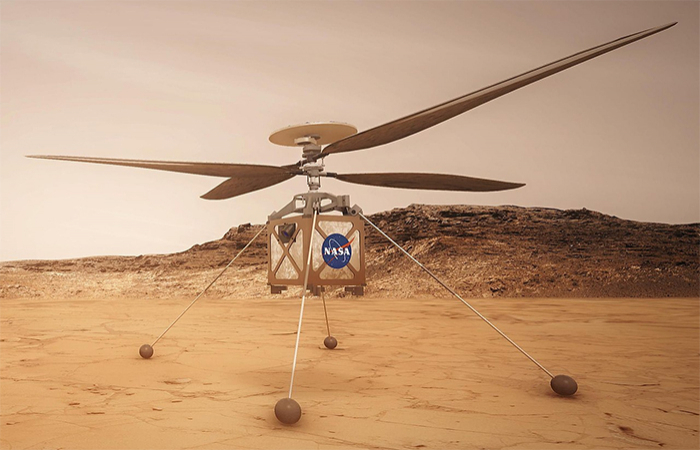The $US2.4 billion, nuclear-powered vehicle, named Perseverance ("Percy" for short) is designed to trundle along the Martian surface, mine for signs of ancient life, capture high-quality video and audio, and collect rock and soil samples for an eventual return trip to Earth.
In preparation for future human landings on Mars, the rover will also carry an experimental device that converts carbon dioxide from the planet's thin atmosphere into oxygen, and test samples of potential space suit material to see how well they hold up against Mars' radioactivity.
And if that wasn't enough, the rover's belly contains a helicopter named Ingenuity.
Perseverance is scheduled to launch at 7:50 am ET on Thursday 30 July atop an Atlas V rocket from Cape Canaveral, Florida.
The liftoff will be streamed live on NASA TV – you can watch below.The broadcast is expected to start at 7:00 am ET (11 am UTC).
The liftoff will mark the third Mars-bound mission to begin this month. It follows the launch of the United Arab Emirates' Hope probe, which aims to orbit Mars to chart a global map of its climate.
China's Tianwen-1 mission, meanwhile, is expected to put a rover on Mars that will use radar to detect underground pockets of water and also put a spacecraft into orbit to study Mars' atmosphere.
The launches were all scheduled closely together in order to hit a critical window in Mars's orbit: The period when its path aligns most closely with that of Earth.
That window comes in February 2021, which is when the spaceships are expected to arrive at Mars. Because of fuel and weight constraints, missing the chance to launch now would have required space agencies to wait until 2022.
Perseverance is scheduled to land at Mars's Jezero Crater on February 18. The crater, once flooded with water, was selected after five years of careful study by planetary scientists because its rock and clay have the potential to contain electrochemical signatures of former life.
The same features that make the Jezero crater appealing for study make it a difficult place to land a rover, however: The site's varied terrain is full of dips, ridges, and boulders.
But engineers have made advances in landing technology, including the development of a more precisely timed landing parachute, since NASA's last rover, Curiosity, arrived on Mars in 2012. Most recently, the agency successfully dropped its InSight lander on Mars in November 2018.
If all goes well, Perseverance will be the fifth Mars rover mission managed by NASA's Jet Propulsion Laboratory, and also the fifth successful Mars rover landing overall (unless China's lands first).
Yet another Mars rover called Rosalind Franklin – a collaboration between the European Space Agency and the Russia's Roscosmos – is scheduled to launch in 2022.
Business Insider














-1741278702.jpg&h=190&w=280&zc=1&q=100)

































